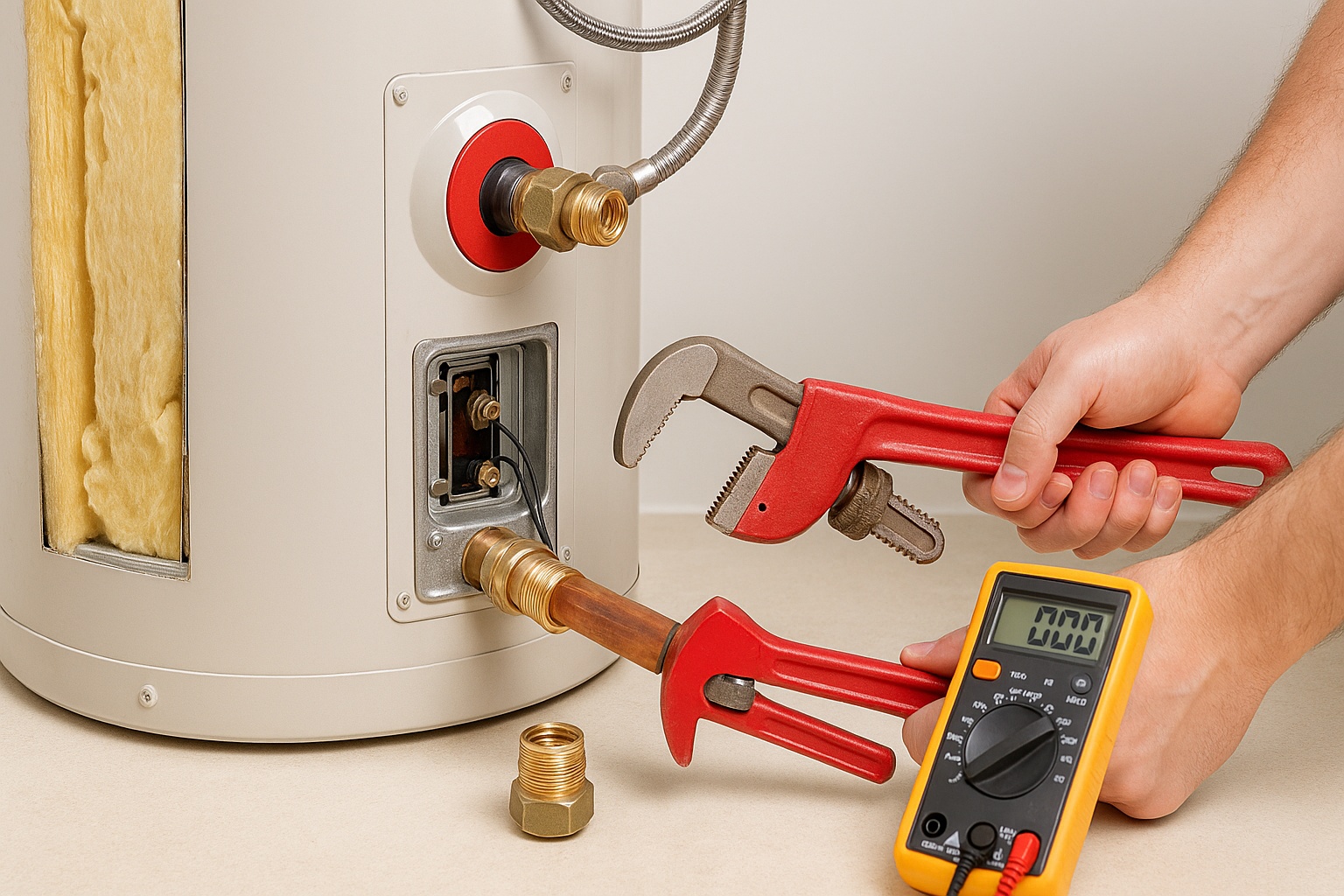There’s nothing worse than hopping into the shower only to be blasted with ice-cold water. A faulty water heater isn’t just inconvenient — it can quickly become costly. But how much does water heater repair really cost? And when should you consider replacement instead? This guide breaks it all down so you can make smart, budget-friendly decisions.
It’s not always obvious that your water heater is struggling. Common warning signs include:
- Inconsistent water temperature
- Rust-colored water
- Rumbling noises from the tank
- Water pooling around the unit
- Low hot water pressure
- Long delays before water heats up
These small indicators often hint at bigger issues like sediment buildup, failing heating elements, or even tank corrosion.
Water heater repair costs typically range from $150 to $500 depending on the issue. Here’s a quick breakdown:
- Thermostat replacement: $100–$300
- Heating element replacement: $200–$350
- Anode rod replacement: $200–$300
- Tank flush (sediment removal): $80–$150
- Drain valve replacement: $100–$150
The more complex the problem, the higher the cost. Emergency calls and weekend repairs can add another 20–50% in fees, so it’s wise to plan ahead.
If your water heater is over 8–10 years old and showing signs of failure, replacing it might be more cost-effective than constantly repairing it. Tankless models last up to 20 years and are more energy-efficient, but they come with a higher upfront cost ($1,000–$3,000).
Ask your plumber for a full inspection — sometimes a single major repair equals the cost of a brand-new unit.
While it’s tempting to DIY, most water heater repairs should be left to professionals. Working with electrical components, gas lines, or pressurized tanks is risky. A licensed plumber ensures the work meets safety codes and won’t void your manufacturer’s warranty.
That said, minor tasks like flushing the tank or adjusting the thermostat can often be handled by confident homeowners.
Here’s how to cut costs without cutting corners:
- Schedule annual maintenance
- Flush your water heater every 6–12 months
- Insulate your tank and pipes to reduce heat loss
- Ask for upfront quotes and compare rates
- Consider a maintenance plan from a local plumber
Before approving any work, make sure to ask:
- Are you licensed and insured?
- Do you guarantee your work?
- Can I get a full inspection to avoid future issues?
- Do you offer emergency repair rates upfront?
Water heater issues are frustrating, but they don’t have to drain your wallet. By recognizing early warning signs and trusting a licensed plumber, you can avoid major breakdowns. Whether it’s a minor thermostat fix or a full replacement, knowing the real costs helps you make confident, informed choices.

